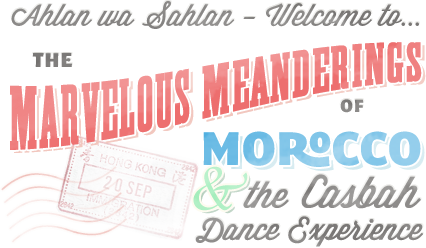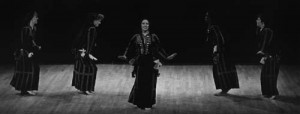In 1978, one of the members of my dance tour group wandered into the Haberdashery Shop (on Gawhar el Kayeed) and learned that it’s young half-owner, Mahmoud Abd El Ghaffar, had some scarves that had a bit of beadwork on them and might possible be adaptable for stagewear, as well as mandils with coin earrings attached that could be used for folklore presentations. He was also willing to sell the coins and ornaments from the mandils separately. She thought this would be useful and called me over to meet him.
He was an honest young man, had fair, fixed prices and also sold some very useful canvas bags with Pharoanic designs cheaper than the other souks around. At that time, he was in partnership with Haga Nefisa, the widow of his partner, who’d died a year or two before.
A very hard-working, religious and astute young man, Mahmoud was very interested in the sort of group I had and what we’d be interested in buying. I explained what we were looking for and showed him the costumes I’d just had made at Mme. Abla‘s (Mme. Abla Ibrahim – the best bedleh/thobe beladi designer and maker in Cairo!) and the extra meters of fringe I’d had made and bought for repairs to other costumes I had at home in New York.
Mahmoud understood a good thing and a new direction when he saw it and started making scarves and dress panels with coins, beads and sequins and meters of beaded fringes in various lengths specifically for American (and later German and then other European) dance tour groups. I wrote about him and his shop and told everyone involved in Mideastern dance, who was going to Egypt about him and where his shop was.
Mahmoud worked over 16 hours a day: his sisters and Haga Nefisa and her daughters worked constantly, making the fringes and beaded scarves, etc. in her house in the zanquat behind the little shop. The shop had become so crowded, thanks to my advertising *and* many, many satisfied customers, that it had to expand into the apartment upstairs.
They prospered, but there were problems with Haga Nefisa‘s sons, who wanted a share but did none of the work (a typical story, no?!?).
Mahmoud, a totally ethical person, paid Haga Nefisa several hundred thousand pounds and dissolved his “partnership of honor” with her, then moved HIS business and very satisfied clientele to a rented apartment/ shop on Sanadia el Azar, until a few years later, when he built a totally new building that he calls “Al Wikalah” (the Warehouse), at 73 Gawhar el Kayeed (in the alley next to the Haberdashery). Four floors chock – full with all sorts of dance-related items! (He is continually expanding it!)
In the meanwhile, he began hiring many, many fellaha and Nubi women to do piecework at home, to help feed their families with what they could earn, teaching them the very special sewing skills necessary and he also hired many professional costume seamstresses to make wonderfully beaded, sequinned and fringed bedlehs and thobe beladi. HIS shop became the one-stop shopping must for every dancer going to visit Cairo.
Now there are very many such businesses, of varying prices and degrees of quality. However, I still get a lot of my personal bedlaat and thobes custom-made by both Mme Abla and Mahmoud, because their standards and work are among the best in all of Egypt..
While Haga Nefisa‘s Haberdshery shop did well for a while under the subsequent management of her sons, thanks to the basis laid by Mr. Abd el Ghaffar‘s very hard work, they had absolutely nothing to do with its inception or growth and now their business is down to almost nothing because they had neither the knowledge/ experience or the work ethic it required. I know this for a fact, because *I* was there at the beginning and am one of the main reasons that Mahmoud’s business went the way it did!

